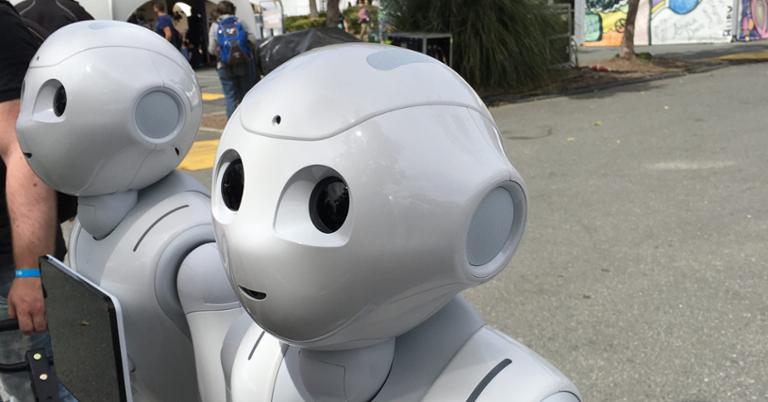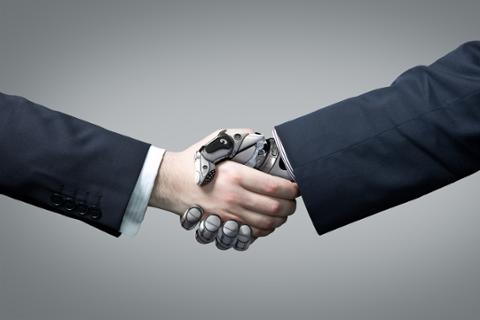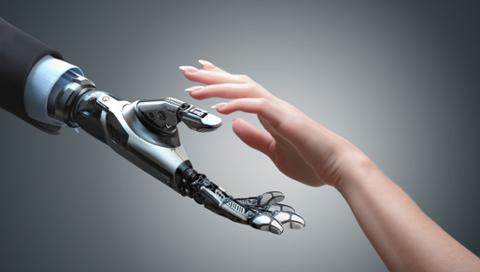[caption id="attachment_142251" align="aligncenter" width="3010"]

Robots can actually work with us![/caption] The elephant in the room with regard to artificial intelligence (A.I.) is jobs. Specifically,
what will humans do once we’ve trained the machines to do manual labor? As it turns out, the changing of the guard has already kicked off in the retail and commerce fields. A new study analyzing e-commerce and retail jobs points out that large warehouses have already begun placing robots where humans once stood. But contrary to what you might expect, this isn't resulting in lost jobs: the Progressive Policy Institute
says that, while big bots are picking orders, fulfillment centers such as Amazon’s are actually boosting employment. Yes, despite worries about robots, these fulfillment centers are big employers. For example, Amazon’s fulfillment center in Kenosha, Wisconsin, has more than 2,000 permanent employees, plus another 1,000 seasonal employees. The
New York Times visited Amazon’s latest warehouse fulfillment center in Florence, New Jersey. Rather than humans busily maneuvering about the facility, robots do much of the tedious picking and sorting. Humans and machines also work in a symbiosis:
The dynamics between people and machines play out on a daily basis on the floor of Amazon warehouses in places like Florence, N.J., and Kent, Wash. In Kent, the robots vaguely resemble giant beetles and scurry around with vertical shelves loaded with merchandise weighing up to 3,000 pounds on their backs. Hundreds of them move autonomously inside a large caged area, tailgating each other but not colliding. On one edge of the cage, a group of human workers — the “stowers” — stuff products onto the shelves, replenishing their inventory. The robots whisk those shelves away and when a customer order arrives for products stored on their backs, they queue up at stations on another edge of the cage like cars waiting to go through a toll both. There, human “pickers” follow instructions on computer screens, grabbing items off the shelves and putting them in plastic bins, which then disappear on conveyor belts destined for “packers,” people who put the products in cardboard boxes bound for customers.
In this scenario, humans make sure machines have bins to load, and those bins are then transferred to humans for final packing and shipment. The aim is efficiency. Instead of traipsing for miles through a warehouse, humans engage with a hub that deploys robots to pick items. Productivity increases exponentially. It’s similar to what we see with
chatbots. Properly developed and distributed, chatbots can handle basic customer service requests. Discovering where an order is or if an item is available in a size or color can be handled by a bot; but more complicated queries can be routed to a human. In that scenario, one person may have calls funneled to them by dozens of bots. The machines aren't going to totally take over anytime in the near future. In other words, humans aren't being driven obsolete by robotics and automation, at least when it comes to sorting, shipping, and managing product. The Progressive Policy Institute also notes that current retail and fulfillment jobs can be done without any post-secondary training; sending a robot into a factory doesn’t require a CS degree. That's potentially good news for a lot of human workers. Robots aren't causing a drastic turn-down in the number of commerce jobs available, either. The Progressive Policy Institute notes the number of e-commerce jobs is steadily on the rise, even as brick-and-mortar retail positions become less stable. It’s hard to argue the current application of A.I. and robots is anything but helpful to the industries making the biggest investments in them, although the
potential impact of automation on wages is another debate altogether, especially in fields outside of commerce.
 Robots can actually work with us![/caption] The elephant in the room with regard to artificial intelligence (A.I.) is jobs. Specifically, what will humans do once we’ve trained the machines to do manual labor? As it turns out, the changing of the guard has already kicked off in the retail and commerce fields. A new study analyzing e-commerce and retail jobs points out that large warehouses have already begun placing robots where humans once stood. But contrary to what you might expect, this isn't resulting in lost jobs: the Progressive Policy Institute says that, while big bots are picking orders, fulfillment centers such as Amazon’s are actually boosting employment. Yes, despite worries about robots, these fulfillment centers are big employers. For example, Amazon’s fulfillment center in Kenosha, Wisconsin, has more than 2,000 permanent employees, plus another 1,000 seasonal employees. The New York Times visited Amazon’s latest warehouse fulfillment center in Florence, New Jersey. Rather than humans busily maneuvering about the facility, robots do much of the tedious picking and sorting. Humans and machines also work in a symbiosis:
Robots can actually work with us![/caption] The elephant in the room with regard to artificial intelligence (A.I.) is jobs. Specifically, what will humans do once we’ve trained the machines to do manual labor? As it turns out, the changing of the guard has already kicked off in the retail and commerce fields. A new study analyzing e-commerce and retail jobs points out that large warehouses have already begun placing robots where humans once stood. But contrary to what you might expect, this isn't resulting in lost jobs: the Progressive Policy Institute says that, while big bots are picking orders, fulfillment centers such as Amazon’s are actually boosting employment. Yes, despite worries about robots, these fulfillment centers are big employers. For example, Amazon’s fulfillment center in Kenosha, Wisconsin, has more than 2,000 permanent employees, plus another 1,000 seasonal employees. The New York Times visited Amazon’s latest warehouse fulfillment center in Florence, New Jersey. Rather than humans busily maneuvering about the facility, robots do much of the tedious picking and sorting. Humans and machines also work in a symbiosis:



